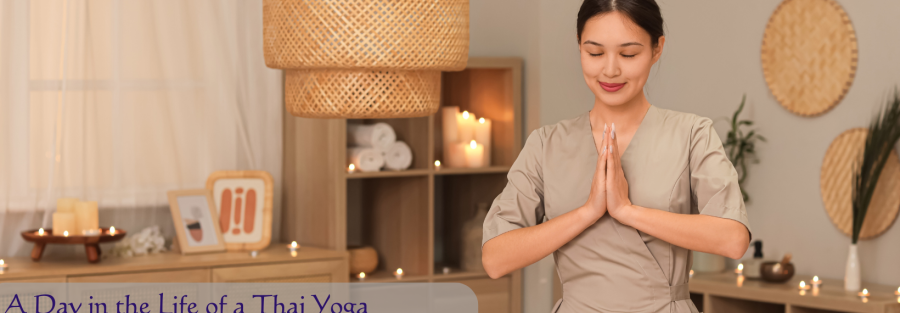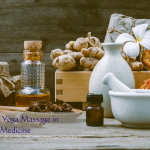The world of wellness offers a diverse array of therapeutic practices, and Thai Yoga Massage stands out as a unique blend of assisted yoga postures and acupressure techniques. A Thai Yoga Massage Therapist plays a vital role in this realm, becoming a facilitator for improved flexibility, stress relief, and a sense of well-being for their clients.
This blog delves into the captivating world of a Thai Yoga Massage Therapist, unveiling the typical structure of their day, the challenges they encounter, and the profound impact they create.
The Morning Ritual: Preparing for Healing
The day for a Thai Yoga Massage Therapist often begins with a mind-body centring. This might involve meditation, gentle stretches, or a few minutes of deep breathing. It allows the therapist to focus their energy and prepare themselves to become a vessel of healing for their clients.
Preparation of the space is equally crucial. The therapist ensures the massage room is clean, welcoming, and well-ventilated. Comfortable mats, pillows, and Thai massage clothing (often loose-fitting loungewear) are laid out, creating an environment conducive to relaxation.
Reviewing appointments is a key step. The therapist familiarizes themselves with each client’s specific needs and preferences. This might include reviewing notes from previous sessions, understanding any injuries or limitations the client might have, and tailoring the massage accordingly.
Welcoming Clients: Building Rapport and Understanding
The arrival of the client marks the beginning of the actual therapeutic experience. A warm greeting and a brief conversation establish a sense of rapport and trust. The therapist inquires about the client’s current well-being, any areas they’d like to focus on, and ensures they feel comfortable with the process.
Clear communication is paramount. The therapist explains the various elements of Thai Yoga Massage, including the use of their body weight, assisted stretches, and acupressure points. Understanding the client’s comfort level with pressure is crucial to ensure a positive and beneficial experience.
The Art of the Massage: A Blend of Skill and Intuition
The actual Thai Yoga Massage session is a beautiful interplay of physical skill and intuition. The therapist uses their hands, thumbs, elbows, and sometimes even feet to guide the client through a series of yoga-inspired stretches. These stretches gently increase flexibility, improve circulation, and release tension in the muscles.
Acupressure points are incorporated throughout the session. By applying pressure to specific points along the body’s “sen” lines (energy channels), the therapist aims to balance the flow of energy and promote overall well-being.
The entire session is a collaborative dance. The therapist observes the client’s body language and adjusts the pressure or movements based on their comfort level. Open communication allows the client to voice any concerns or request modifications as needed.
The Power of Connection: Witnessing Transformation
Beyond the physical manipulation, Thai Yoga Massage often fosters a deeper sense of connection between the therapist and the client. Many clients seek relief from stress, anxiety, or chronic pain. The therapist plays a supportive role, witnessing the client’s journey towards greater well-being.
The quiet focus and mindful approach of the massage can create a safe space for clients to release tension, both physical and emotional. Witnessing this transformation, this positive impact on a client’s life, is a deeply rewarding aspect of being a Thai Yoga Massage Therapist.
Beyond the Session: Self-Care and Professional Development
The day for a Thai Yoga Massage Therapist doesn’t end after the last client leaves. Self-care is a vital aspect of their practice. The physical demands of the work require therapists to maintain their own flexibility and well-being. This might involve regular yoga practice, stretching routines, or self-massage techniques.
Professional development is also crucial. Staying updated on the latest techniques, attending workshops, and participating in continuing education opportunities ensure that therapists can offer their clients the best possible care.
This can also involve exploring other modalities like aromatherapy or reflexology to further enhance their therapeutic toolkit.
Challenges and Rewards: The Balancing Act of a Thai Yoga Massage Therapist
The life of a Thai Yoga Massage Therapist is not without its challenges. Physical exertion can be significant, especially with a busy schedule. Maintaining proper posture and body mechanics is vital to prevent injuries.
Emotional labor can also be a factor



